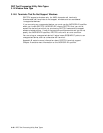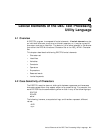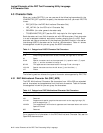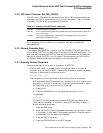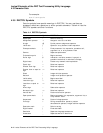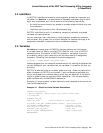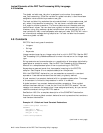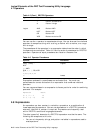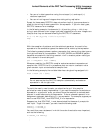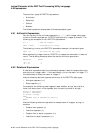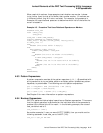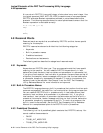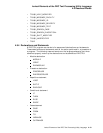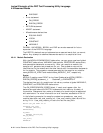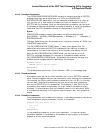
Lexical Elements of the DEC Text Processing Utility Language
4.7 Operators
Table 4–5 (Cont.) DECTPU Operators
Type Symbol Description
+ Pattern concatenation
& Pattern linkage
Logical AND Boolean AND
NOT Boolean NOT
OR Boolean OR
XOR Boolean exclusive OR
You can use the + operator to concatenate strings. You can also use the relational
operators to compare a string with a string, a marker with a marker, or a range
with a range.
The precedence of the operators in an expression determines the order in which
the operands are evaluated. Table 4–6 lists the order of precedence for DECTPU
operators. Operators of equal precedence are listed on the same line.
Table 4–6 Operator Precedence
Operator Precedence
unary +,unary – Highest
NOT
*, /, AND
@, &, +, –, | , OR, XOR
=, <>, <, <=, >, >=
:= Lowest
Expressions enclosed in parentheses are evaluated first. You must use
parentheses for correct evaluation of an expression that combines relational
operators.
You can use parentheses in an expression to force a particular order for combining
operands. For example:
Expression Result
8*5/2-4 16
8*5/(2-4) -20
4.8 Expressions
An expression can be a constant, a variable, a procedure, or a combination of
these separated by operators. You can use expressions in a DECTPU procedure
where an identifier or constant is required. Expressions are frequently used
within DECTPU conditional language statements.
The data types of all elements of a DECTPU expression must be the same. The
following are exceptions to this rule:
• You can mix keywords, strings, and pattern variables in expressions used to
create patterns.
4–8 Lexical Elements of the DEC Text Processing Utility Language



